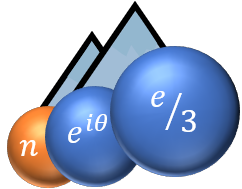The Fractional Quantum Hall Effect (FQHE) is a fascinating manifestation of collective quantum phenomena. Elementary excitations are quasiparticles with fractional charge [1] and statistics (anyons) [2]. Both can be revealed through various methods based on non-equilibrium current correlations through a Quantum Point Contact (QPC) created in a Hall bar, where quasiparticles tunnel between opposite edge states. The determination of their fractional charge q has been conclusive only for Laughlin states, thus at simple fractional filling factors $\nu$ for which $q=\nu e$, and has been based on zero-frequency poissonnian shot noise [1]. Nonetheless, this determination is crucial to understand states for other values of $\nu$, such as the Jain series, and for which the underlying microscopic models are still under debates.
We have developed a unifying perturbative approach for non-equilibrium transport [3,4,5] which offers more robust and advantageous methods. It doesn't require the knowledge of such microscopic models nor initial thermal states, but only few conditions. These methods rely on universal non-equilibrium fluctuation relations from which the Josephson-type frequency can be extracted. We will present first those based on high-frequency noise [5], which have been implemented by Gwendal Fève's group (coll.) to determine q=e/3 at $\nu=2/3$ [6]. Secondly, we will address those based on the photo-assisted noise under an ac voltage, and implemented by D. C. Glattli's group to determine q= e/5 for $\nu=2/5$ [7]. We will finally revisit the implementation and the charge of minimal excitations [8] under lorentzian pulses [3,4].

 PDF version
PDF version
